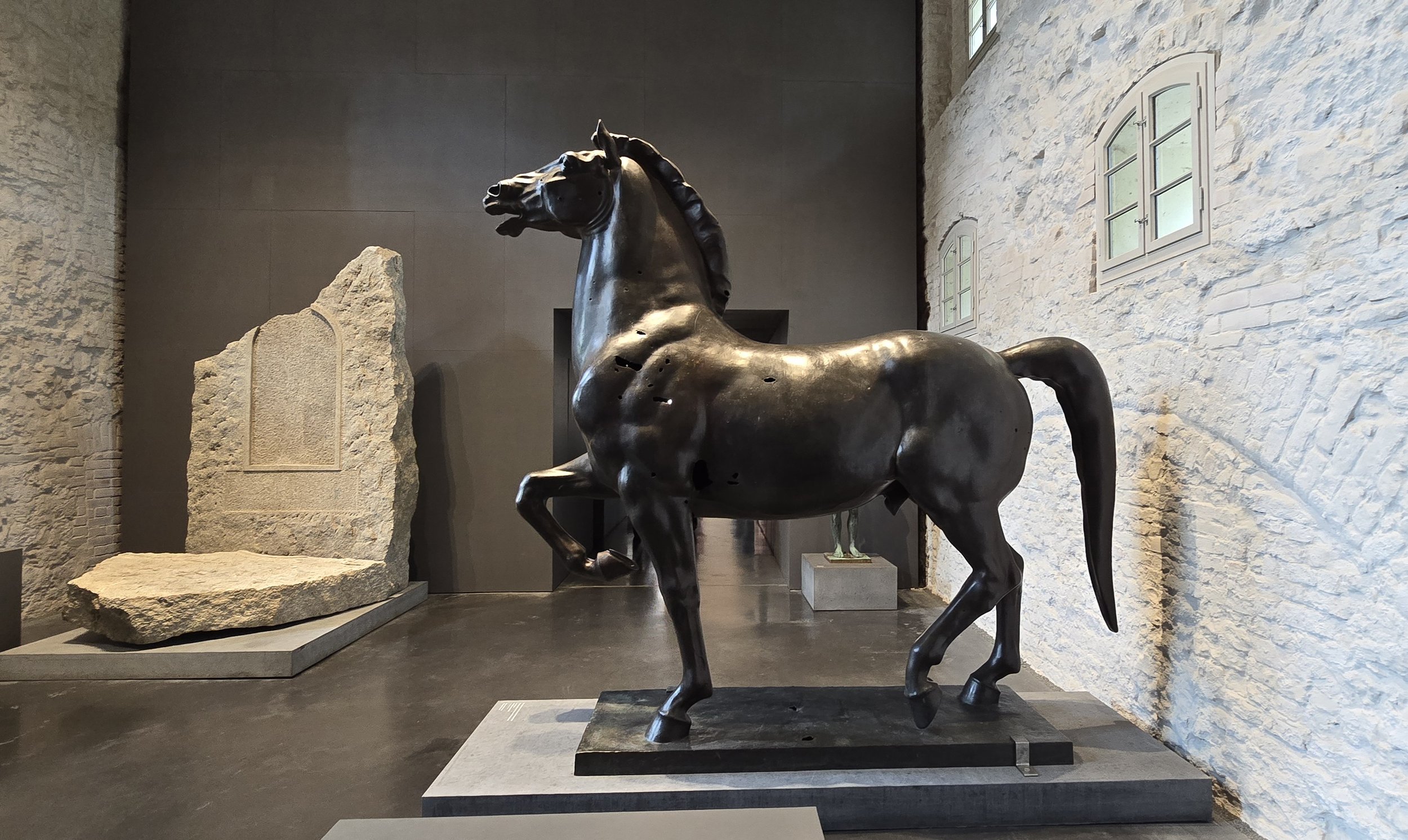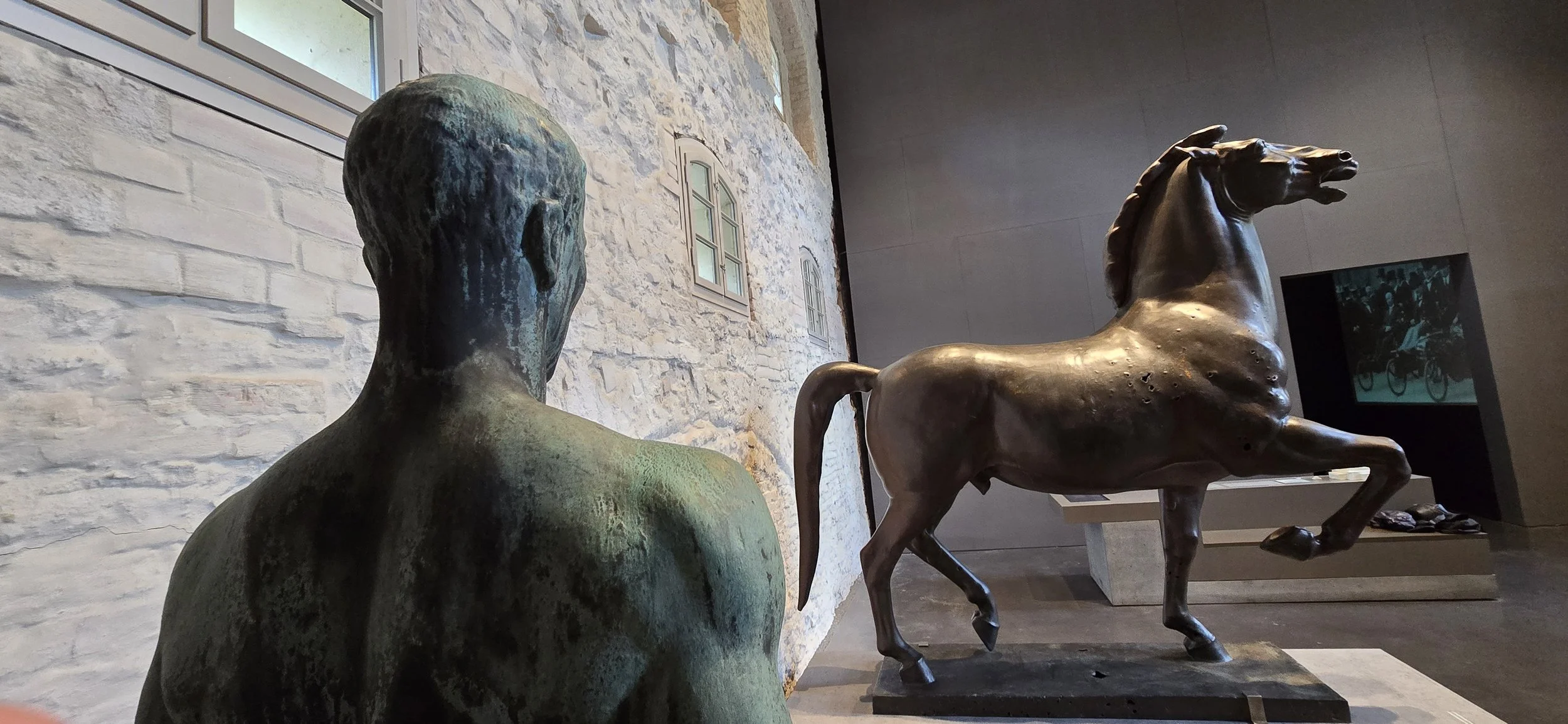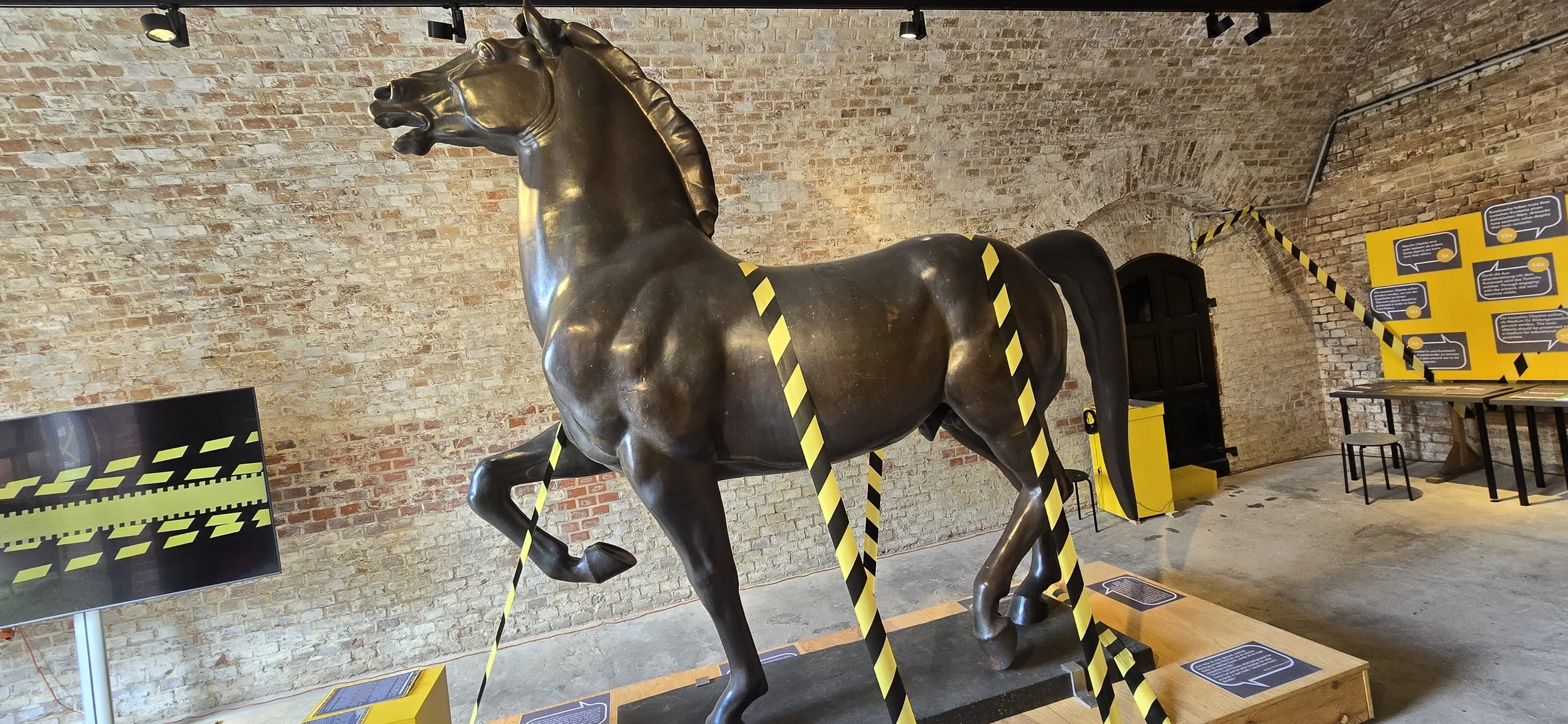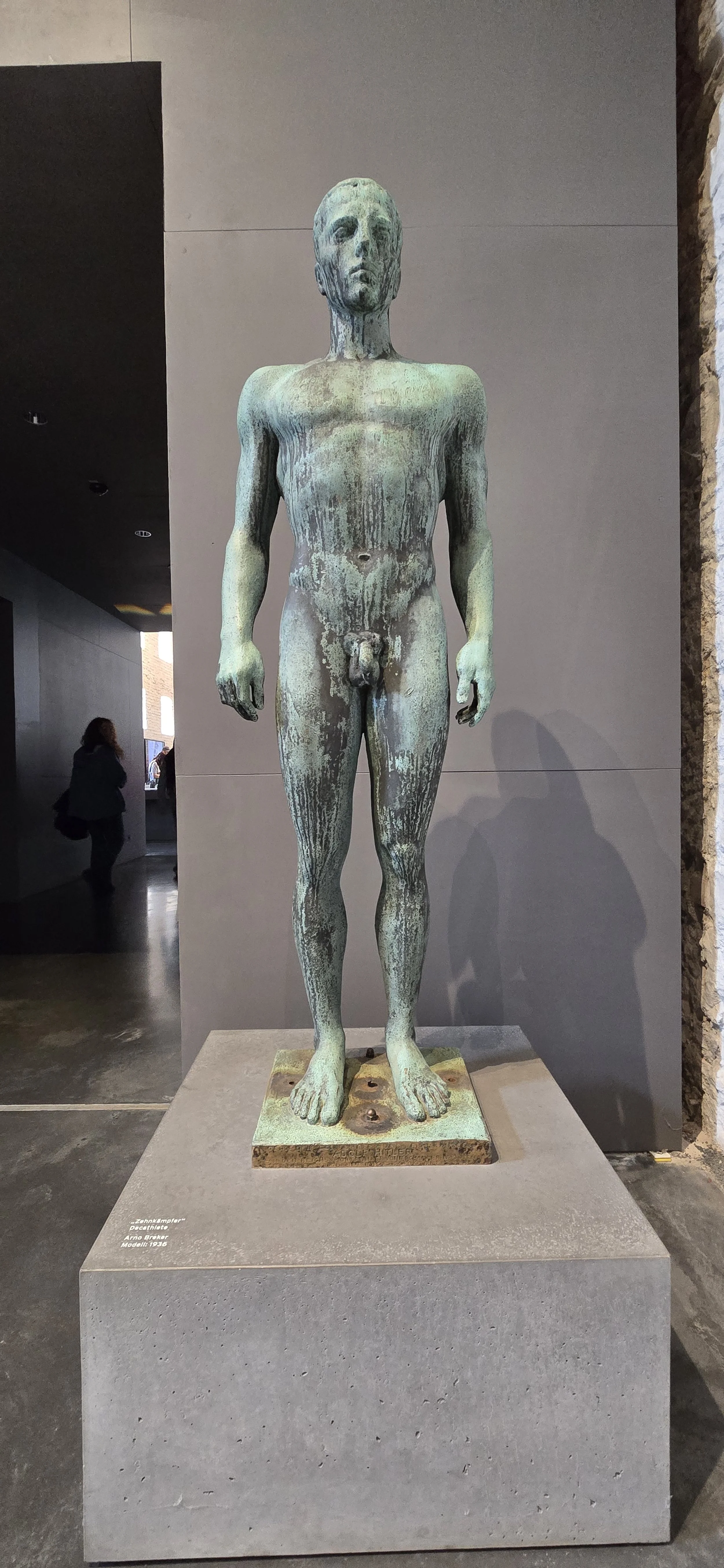
Hitlers Horses
In 1939,Nazi artist Josef Thorak created the two "Striding Horses" ("Schreitende Pferde" in German) for Adolf Hitler's New Reich Chancellery in Berlin.
Now the controversial three-meter-high and two-ton bronze sculptures are presented together in Berlin again for the first time at the Spandau Citadel in Berlin.
One of the horses has been on display there for some time, while the second one is now being exhibited for the first time in 77 years following restoration work.
For a long time it was not clear what had happened to the Nazi sculptures.
It was initially assumed that they had been destroyed during attacks on Berlin towards the end of the Second World War. Later, they were discovered on a Soviet barracks site near Eberswalde, northeast of Berlin.
But they disappeared from there when the Berlin Wall fell in 1989.
It wasn't until 2013 that the Berlin police received a photo that gave reason to suspect the horses might still exist. Along with the photograph was a tip-off that the horses were being offered on the secret art market for an amount in the millions.
That was the starting signal for Rene Allonge, an inspector at the Berlin State Criminal Police Office who specializes in art crime, to join forces with Dutchman Arthur Brand, perhaps Europe's most famous private art detective, to investigate.
The horses once stood just a few kilometers away from their current location in the citadel, in the garden of Adolf Hitler's New Reich Chancellery. The dictator's idea was that the sculptures would decorate the "world capital Germania" he was planning.
Describing the ways the sculptures convey Nazi ideology, Urte Evert, head of the City History Museum of the Spandau Citadel, points out that the stallions embody a certain idea of masculinity.
"The neck is extremely large and powerful, the muscles are completely exaggerated. The whole thing radiates a certain violence," the historian says.
Like Arno Breker (1900-1991) whose Sculpture “The Decathalete” is also photographed, Josef Thorak was one of the most important propaganda artists of the Nazi regime.












